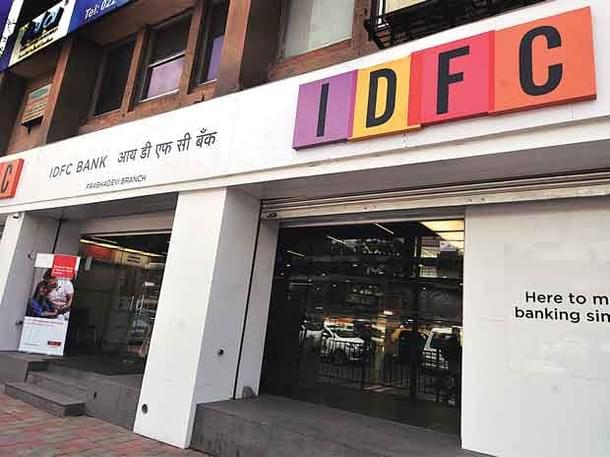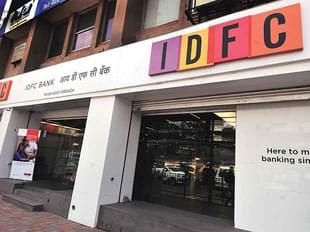Business
IDFC-Shriram Merger: Time Window For Consolidation In Banking Is Closing Fast
R Jagannathan
Jul 10, 2017, 12:14 PM | Updated 12:13 PM IST
Save & read from anywhere!
Bookmark stories for easy access on any device or the Swarajya app.


The proposed merger of IDFC Group with the Shriram Group is more a comment on the urgency for consolidation in the private sector banking space than anything else. There is no other reason why a group, which operates a bank under a non-bank finance holding company, would want to agree to a complex merger with another group with interests in retail and truck financing, not to speak of insurance.
Under the proposed deal, which the two partners have 90 days to work out in detail, Shriram City Union Finance (SCUF) will merge with IDFC Bank, Shriram Transport Finance (the big daddy in the group that has assets even larger than IDFC Bank’s Rs 60,000 crore) will be delisted and become a subsidiary of the holding company (IDFC Ltd), and the insurance companies (both life and general) will again become IDFC subsidiaries.
It is obvious why this complex route is being taken for a merger: if Shriram Transport (with Rs 80,000 crore in assets) is merged, it will be about a whale marrying a dolphin, if not a minnow. Hence the preference for a merger with the much smaller Shriram City Union Finance in the initial stage of the arrangement.
IDFC Bank, which has already struggled with converting an infrastructure finance company into a bank, does not have the size and scale needed to merge fully with Shriram. It needs time to expand its retail reach, and this is probably the focus of merging with the smaller SCUF first. Once this merger is consummated, the larger merger with the transport finance company may be attempted later. That may be years away, for the biggest hurdle in merging non-banks with banks is that the merged entity immediately must lock up resources in cash and statutory reserve ratios (CRR and SLR). When so much money is locked up, the chances of any huge growth in the merged loan book are small.
The need for this kind of complex merger is clearly the closing window of opportunity in an industry where competition is escalating. Driven by technology changes and a huge cache of bad loans, banking needs quick consolidation, and opportunities for inorganic growth outside the public sector are few and far between. Two years ago, Kotak Mahindra Bank swallowed up ING Vysya, and is now looking for even larger acquisitions – including possibly Axis Bank, if the government is willing to let private parties bid for the stake held by the specified undertaking of UTI.
HDFC Bank, which is the most valuable bank in India, also senses red meat and may pitch in for any big acquisitions, if available. With a market valuation of Rs 4.27 lakh crore, HDFC Bank has the kind of war chest that is really needed in acquisitions. In any merger, market cap is the currency used for payments to acquire smaller companies.
IDFC Bank, which is still in the early stages of conversion from NBFC to bank, needs to expand its retail franchise faster if it is to remain in the game where there are already three big private players – HDFC, ICICI and Kotak. And the bank’s managing director and chief executive officer, Rajiv Lall, admits that, as a listed entity, IDFC is under pressure to grow faster. He said as much in an interview to Mint newspaper about the need for inorganic growth: “Why would you want to wait? If I’m buying five years of hard work organically, then why wouldn’t I do it? Shareholders keep complaining your revenues are not growing fast enough. You will have to carry all stakeholders. If I were an unlisted company, I’d take all the time in the world. But I’m not.”
While consolidation in the public sector banking space is being driven by the sheer need for capital and to prop up weak banks, the private banking space is threatened by the prospect of stronger retail competition from new types of differentiated banks, including payments and small finance banks. At one end are giant mobile telephony companies like Airtel with a customer base of 325 million users (including Telenor, which it is buying), who can be targeted to become customers of the payments bank; then there are giant e-wallet companies like Paytm, which claimed over 200 million wallet users earlier this year, at the peak of demonetisation. And this is just the beginning. More payments banks will come into being this year and the next.
At the other end of the pincer are non-banks with a strong customer lending franchise, like Shriram Transport and AU Small Finance Bank, with the latter making a huge debut recently on listing with a 47 per cent jump over its IPO allotment price. At Rs 516 around mid-morning on 10 July, AU is valued at Rs 14,668 crore. The bank is into vehicle finance and lending to micro, small and medium enterprises.
The universal banks’ franchise is about to be attacked both at the liabilities and asset ends. With big companies now able to raise money directly from the market, lending growth must come from small and medium-sized companies. This is the target segment of NBFCs who are becoming banks. On the other hand, the cheap current and savings accounts deposits of retail customers, which have been the mainstays of banks’ lower cost structure, will increasingly be nibbled at by payment banks, which can raise upto Rs 1 lakh in deposits from each customer and invest it in safe, government paper. It is only a matter of time before the Reserve Bank of India allows them to lend judiciously, or cross-sell financial products to their customers.
While the real heat from this competition will be faced by stodgy public sector banks, the private sector banks know that they will face shareholder pressures if they don’t stay with the leaders in the pack.
The IDFC Bank-Shriram merger will be a difficult one to pull off, but it is almost a necessity for the former.
Jagannathan is former Editorial Director, Swarajya. He tweets at @TheJaggi.





